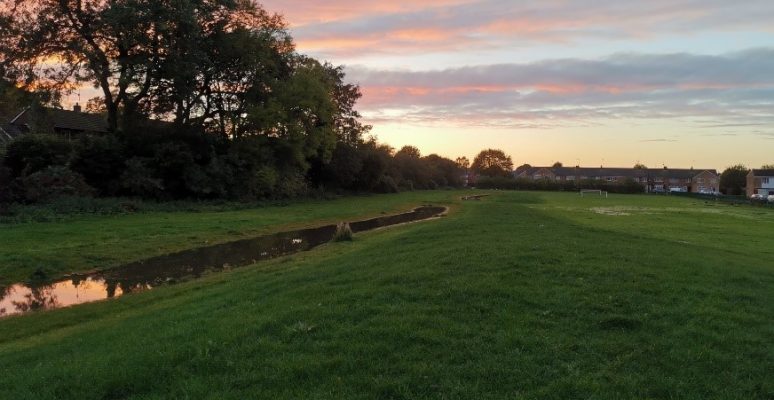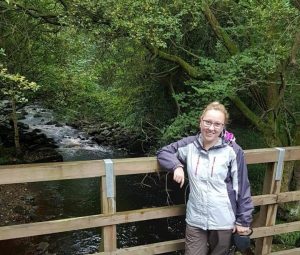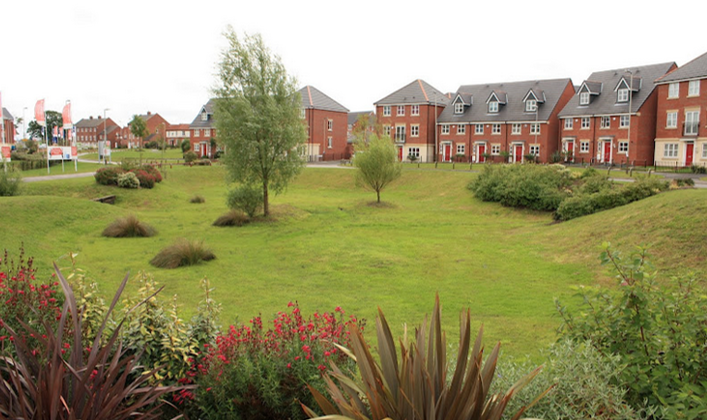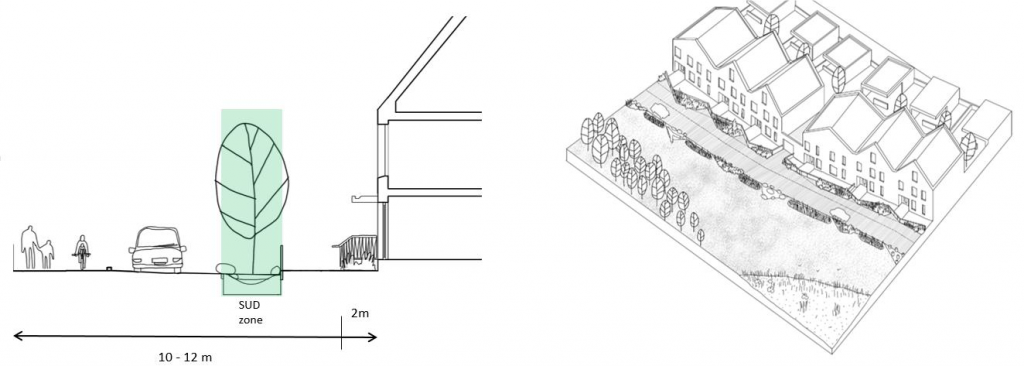
A personal reflection by Dr Jessica Fox, Senior Flood Risk Officer, Hull City Council on the importance of natural flood management

I am a big supporter of protecting and enhancing the natural world. It is more important now than ever before that we work with the natural environment as best we can, for climate resilience, biodiversity and, not least, to build resilience to the increasing flood risk we face.
This last year has really made us all stop and think about many aspects of our lives. One of the few places we’ve been able to visit during the many lockdowns have been our local green spaces – some of us have visited them for the first time, or for some it has made us reconnect and appreciate the value of the natural environment. Going forward, I really hope that we continue to value and connect with the natural environment and don’t lose sight of why it is so important.
JOIN THE FLOOD INNOVATION CENTRE’S INTERACTIVE, ONLINE NFM WORKSHOP SERIES TO LEARN MORE ABOUT OPPORTUNITIES FOR YOUR BUSINESS – STARTING 12 MAY 2021
Over the last few decades people have started to listen to the scientists and realise that global warming is a problem for everyone and we all need to play a part in protecting the planet if we want a chance to save our livelihoods. In some ways we’ve already started to do this, for example, the uptake of solar panels on new homes to help generate sustainable energy has become more popular, however, the risk of flooding is very high yet still being ignored or at best considered as an inconvenience. Why is this?
In urban areas the risk of surface water flooding is increasing and we are running out of space to store water, which until recently, was largely hidden in underground storage tanks. Our perception of seeing water within our communities is outdated and, thanks to increasing high-rainfall events as a result of climate change, we are going to have to get used to seeing more water above ground. If we plan correctly, we can try to make sure water is stored where we want it rather than in people’s homes. Now is the time for a major social change in the perception of water and flooding.
With a growing population we’re not going to stop building, but it is clear that we cannot take much more space from nature. When it rains, water needs somewhere to go. We cannot define how much water is allowed to fall on us, but we can have an influence on the capacity for storing water on the surface. This is where we can look to nature based solutions for help.
In the past sustainable drainage solutions (SuDS) have been looked at for urban areas and natural flood management (NFM) has been considered for rural areas. However, these are now becoming one and the same, which is a step in the right direction, but what we really need is for it to be considered the new normal. How do we make this change? SuDS or NFM aren’t just about flooding as the name NFM suggests. These types of solutions can be viewed by 4 pillars:
- Water quantity
- Water quality
- Amenity
- Biodiversity benefits
Whether we want to talk about health and well-being, flood risk or saving the bees; SuDS and NFM measures are a key player in delivering sustainable solutions for multiple benefits. It seems obvious that we should have SuDS or NFM measures everywhere, so why don’t we?
The potential for nature based solutions is exponential – so what’s the problem?
NFM should be an integral part of sustainable development. It plays a key role in storing surface water, which is one step closer to addressing and combatting the growing risk of flooding. So what’s the problem?
The first problem is that unfortunately NFM is not often considered at the design stage of a new development. This means that when developers are seeking planning permission, which include a drainage impact assessment in areas at high flood risk, SuDS measures are added as an afterthought and are not incorporated properly into a scheme’s design but rather as a stand-alone feature. This is not ideal and could significantly limit the functionality and performance of the measure, sometimes making it a moot point.
The next problem we have is that architects are keen to provide innovative NFM and SuDs designs for new developments but then these designs are not taken to the build stage. This could be because the contractors often lack knowledge and expertise in implementation and do not want to take on the liability. For a successful and sustainable long term scheme, measures need to be incorporated into new designs at the very beginning or retrofitted appropriately so that they can be designed into developments rather than apart from.
These nature based measures are one way for us to essentially build nature into new designs or retrofit into existing developments. This is so important when we as a society need more space to live but nature is clearly telling us it needs more space too. NFM and SuDS work by letting nature do its thing, and although this may sound contradictory, we have the opportunity to engineer nature in a way that suits us and benefits nature at the same time. In the past contractors were asked to carry out either an engineered scheme OR an environmental one. But now we are seeing more ‘engineered environmental schemes’ being desired. But these come with challenges.
Some examples of NFM in urban areas include:
- Swales/ bioswales
- Rain gardens
- Green roofs
- Wetlands
- Detention basins

“What we definitely don’t want to see are measures like bioswales being delivered as concrete storage areas that are missing the fundamental characteristics like soils and vegetation to help absorb water and deliver multiple benefits. What we do want to see are carefully designed schemes that are capable of capturing and storing water in a managed way whilst maintaining the natural features.”
There isn’t a one way fits all with nature based solutions; the generic factors of each measure can be easily adapted but the finer details need to be bespoke to its location. How do we know the ‘right’ way to engineer these natural solutions? How can we be assured that we won’t in fact make the flood risk worse by installing these measures? It is not a given that engineers or other contractor are experts in local drainage but to start with we need contractors that can install these measures correctly. This is a learning curve for all of us and the only way we will learn is by trying. We can’t wait and just see what happens or wait for someone else to deal with it.
Is this a new problem?
Flooding is not a new problem. People and communities have been attracted to living near water for generations. Until recently, it was standard to build underground storage tanks to store excess surface water. However, space is running out. The population in England and globally has more than doubled in the past 50 years so the space taken up by people has massively increased while the space for nature has gone down. This is a major concern, especially when thinking about flood risk. If we restrict the space nature needs then our exposure and hence risk of being impacted by flooding increases. Sir David Attenborough has told us we need to rewild the planet to save it. There is no us without a balanced and sustainable Earth. But there can be a thriving Earth without us, so our only option is very clear: stop fighting and destroying nature and learn to live with it.
Can we develop and be at one with nature?
Traditionally, developments have been focused largely on the buildings, whether that be homes or businesses. There is a real opportunity for developers who are prepared to maximise the multiple benefits of working with nature to create schemes that treat buildings and the surrounding land holistically.
Looking ahead, although flood risk is a primary focus for many authorities and organisations, other environment issues are becoming more recognised; and these do not need to be dealt with separately. Nature based solutions offer multiple benefits that can offer long term sustainability and resilience if they are designed, built and maintained correctly. Post-covid the UK government’s message on planning is ‘Build Back Better’, but does ‘better’ include green or nature recovery? Certainly, the UK Government’s 25 year Environment Plan and the Environment Agency’s National Flood and Coastal Erosion Risk Management Strategy for England focuses on developing communities that are resilient to tomorrow’s climate. Policy will only go so far, so how do we push this?
What does the future look like?
Most of the time the questions that are asked are: ‘should this piece of land be developed for housing or left to be a natural green space?’ But space is running out and the risk of environmental disasters is increasing. So why can’t we have both? The simple answer is that we must find a way because it is the only way. Going forward developments and hence the developers and architects really ought to seek new designs that incorporate nature rather than omit it.
No longer should we look at the natural environment as a separate ‘asset’, and yes the natural environment is now becoming widely accepted as being an asset. We need to embed the natural environment into our development, not see it as an inconvenience but an opportunity. This is a major challenge we all now face and must overcome if we want to build resilient communities.
From experience, the way I see it there are 3 key areas where there is immediate opportunity for development in delivering nature based solutions:
- Getting developers to include NFM measures at the design stage
- Finding contractors that are experienced in installing these measures
- Finding a sustainable way to maintain the measures to ensure longevity and success, both in terms of funding and skilled contractors to maintain and if required fix or update NFM measures.

So, we have an opportunity for SMEs to come in and bridge this gap. In the Humber region, which is an important asset nationally economically as well as environmentally, local knowledge is key to be able to design and deliver successful nature based solutions. The opportunity is here. Now is the time to work together and work towards building a more sustainable future.
To help SMEs respond to these growing business opportunities, the Flood Innovation Centre is delivering a five-week Natural Flood Management workshop series from 12 May 2021. The online, interactive workshops are aimed at SMEs who are looking to innovate, deliver or develop NFM solutions. In order to access the fully-funded (free to your business) workshop series, please visit www.floodinnovation.co.uk to register.
Title image shows an Aquagreen in Hull, image credit to Hull City Council